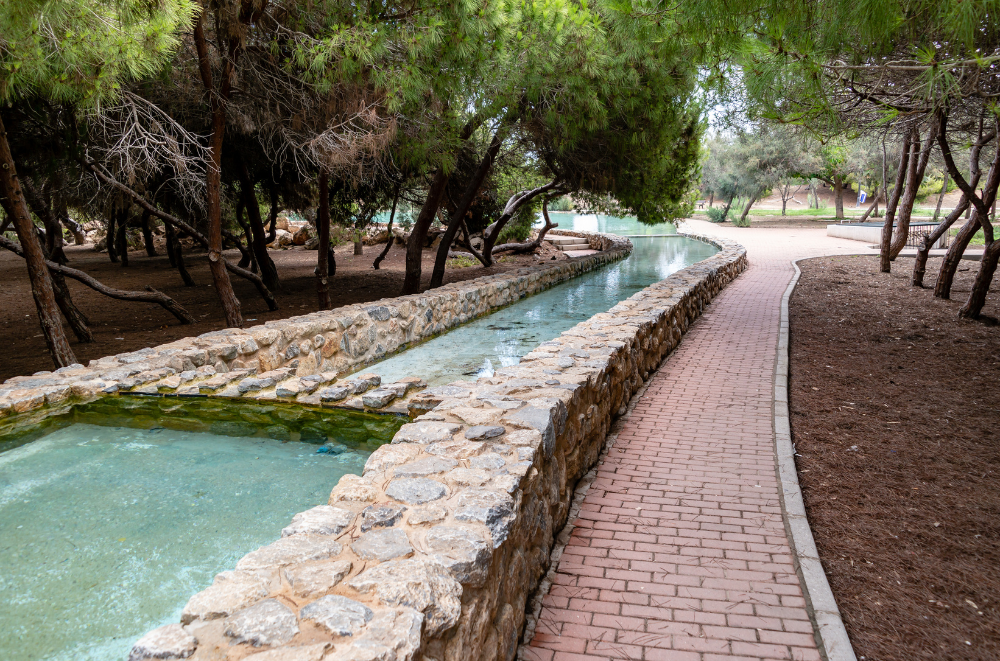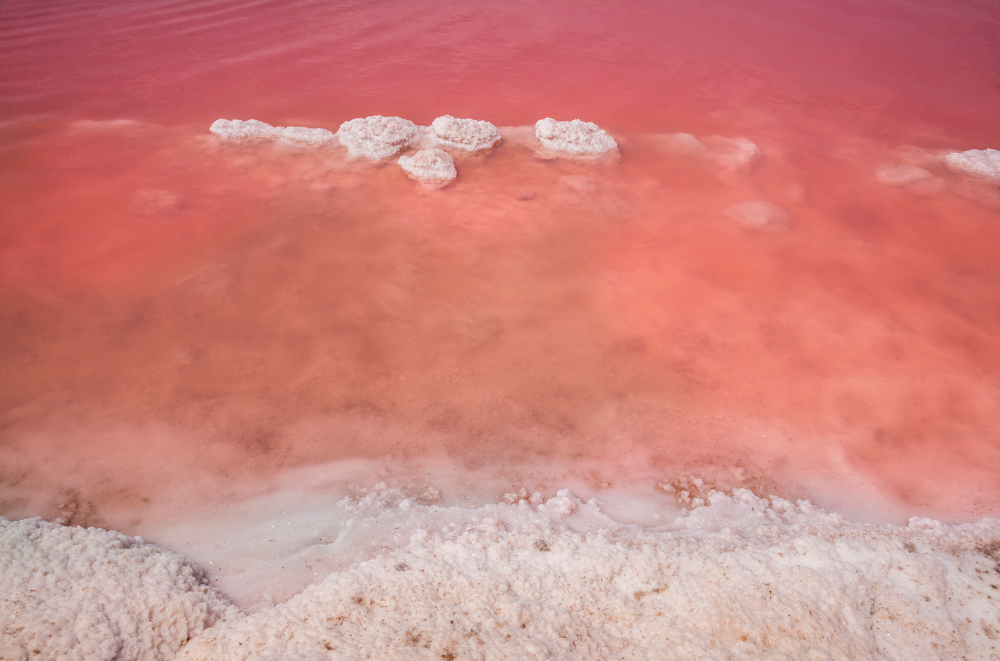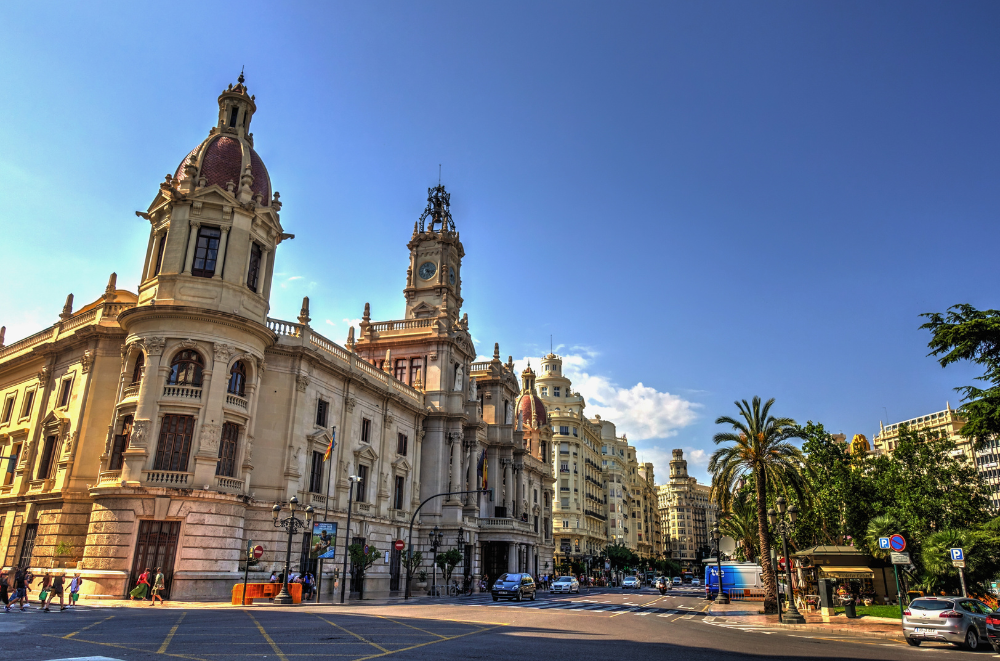Have you ever dreamed of witnessing a natural wonder that seems to defy reality? Look no further than the stunning pink lake in Spain, known as Las Salinas de Torrevieja, not far away from Valencia. This rose-colored lagoon is a must-see destination for nature lovers and photography enthusiasts alike. Sitting along the sunny Costa Blanca (not to be mistaken with Costa Brava), this extraordinary salt lake transforms the landscape into a surreal palette of pink colors, creating a spectacle that’s both mesmerizing and beautiful. As one of Europe’s most unique natural phenomena, the pink salt lake of Torrevieja offers visitors a chance to experience the magic of nature’s color palette in a way few other places can match.
Location of the Pink Lake
The pink salt lake is situated in the province of Alicante, specifically in the town of Torrevieja on Spain’s Costa Blanca. This unique natural phenomenon is part of a larger protected area called Lagunas de La Mata y Torrevieja Natural Park. The park encompasses two lagoons: the larger pink lake of Torrevieja and the smaller, emerald-green La Mata lagoon.
The Science Behind the Pink Color
The mesmerizing pink hue of Las Salinas de Torrevieja, the famous pink lake in Spain, results from a unique combination of natural elements. The high salt concentration creates an ideal environment for Halobacterium bacteria and Dunaliella salina algae to thrive. These microorganisms produce beta-carotene, a pigment that gives the water its distinctive rosy color.
The intensity of the pink shade in this Spanish salt lake can vary depending on factors such as sunlight, temperature, and salt levels. During summer months, when conditions are optimal, the pink color often becomes more vibrant, creating a spectacular sight for visitors. This delicate ecosystem is an example of nature’s ability to create beauty in extreme environments, making the pink lake a unique and ever-changing natural wonder.

Best Visiting Time
While the pink lake in Torrevieja is beautiful year-round, the summer months from June to September offer the most vibrant display of color. During this period, increased sunlight and warmer temperatures intensify the pink hue, creating a truly spectacular sight. However, keep in mind that summer is also the peak tourist season, so you might encounter more crowds.
Spring and autumn can be excellent alternatives, offering pleasant weather and fewer tourists. Winter visits can still be rewarding, though the color might be less intense. Regardless of the season, try to plan your visit during the golden hours of sunrise or sunset for the most magical experience.

Activities at Las Salinas de Torrevieja
The pink lake in Spain offers more than just a feast for the eyes. Photography enthusiasts will find endless opportunities to capture the surreal landscape and vibrant colors of the pink lagoon. The interplay of light and water creates stunning reflections, especially during the golden hours.
Birdwatchers will be delighted by the diverse avian population that calls this area home. Flamingos, in particular, are frequent visitors, adding another touch of pink to the already rosy landscape. Game recognizes game 🙂 Other species you might spot include avocets, stilts, and various gulls.
For those who enjoy a leisurely stroll, the surrounding natural park offers well-maintained walking trails. These paths allow visitors to explore the unique ecosystem up close while respecting the fragile environment.
To delve deeper into the area’s history and significance, a visit to the local salt museum is highly recommended. Here, you can learn about the long-standing tradition of salt production in the region and its impact on the local economy and ecology.

Nearby Attractions
While the pink lake is undoubtedly the star attraction, the surrounding area offers plenty of other points of interest. The beaches of Torrevieja are renowned for their fine sand and clear waters, perfect for a relaxing day by the sea.
Adjacent to Las Salinas, you’ll find La Mata Natural Park, another ecological gem worth exploring. This park features a variety of landscapes, from salt marshes to pine forests, providing a diverse habitat for local flora and fauna.
A short drive away, the Guardamar del Segura sand dunes offer a unique coastal landscape. These protected dunes are not only beautiful but also play a crucial role in preserving the local ecosystem.
For those interested in exploring more saline landscapes, the Santa Pola salt flats provide another fascinating glimpse into the region’s salt production heritage.
History enthusiasts shouldn’t miss the opportunity to visit the Elche Palm Grove, a UNESCO World Heritage Site. This vast palm forest, the largest in Europe, dates back to the Moorish period and offers a serene oasis in the heart of the city.

Getting to Las Salinas de Torrevieja
Accessing the pink lake in Spain is relatively straightforward, with several transportation options available. The most convenient way to reach Las Salinas de Torrevieja is by car, which allows for greater flexibility in exploring the surrounding area.
For those flying into Spain, the nearest airports are Alicante-Elche Airport (ALC), located about 40 km away, and Murcia-San Javier Airport (MJV), approximately 45 km from Torrevieja. Both airports offer car rental services, making it easy to continue your journey to the pink lake.
If you prefer public transportation, regular bus services connect Torrevieja with major cities in the region, including Alicante and Murcia. From Torrevieja town center, local buses or taxis can take you to the natural park.
Visitor Guidelines
To ensure the preservation of this unique ecosystem and to make the most of your visit, it’s important to follow some guidelines. Always respect the environment by staying on designated paths and refraining from entering the water. The delicate balance of the lake’s ecosystem can be easily disturbed by human interference.
Given the area’s climate, especially during summer months, it’s crucial to come prepared. Bring plenty of water, sunscreen, and a hat to protect yourself from the strong Mediterranean sun. Comfortable, sturdy shoes are recommended as the terrain around the lake can be uneven in places.
Before your visit, it’s worth checking local regulations as some areas may have restricted access during certain times, particularly during bird nesting seasons.

Other Pink Lakes in Spain
While Las Salinas de Torrevieja is the most famous, Spain has several other pink lakes that are worth exploring. The Laguna Rosa de Peña Hueca in Toledo offers another stunning display of pink waters, set against the backdrop of the La Mancha region.
In Spanish Guadalajara, the Salinas de Imón presents a unique landscape where pink-hued salt pans create a patchwork of color. These historic salt flats have been in use since the Middle Ages.
For those venturing to southern Spain, the Salinas de Cabo de Gata in Almería provides yet another opportunity to witness this natural phenomenon. Located within the Cabo de Gata-Níjar Natural Park, these salt flats offer a beautiful contrast to the surrounding arid landscape.
FAQ About Las Salinas de Torrevieja
Curious about visiting the pink lake in Spain? I’ve compiled answers to some of the most common questions about Las Salinas de Torrevieja. From practical tips to interesting facts, this FAQ section will help you plan your visit to this unique natural wonder.
Is it safe to swim in the pink lake in Spain?
Swimming in Las Salinas de Torrevieja is not allowed. The high salt content and delicate ecosystem make it unsafe for humans and harmful to the environment. However, you can still enjoy the lake’s beauty from designated viewing areas and walking paths.
Can I bring my children to visit the pink lake?
Absolutely! The pink lake in Spain is a fascinating destination for families. Children will be amazed by the unusual color of the water and might even spot some flamingos. Just ensure they understand not to touch or enter the water. The nearby La Mata Natural Park also offers family-friendly walking trails and picnic areas.
What’s the best time of day to photograph the pink lake?
For the most vibrant colors and magical atmosphere, visit Las Salinas de Torrevieja during the golden hours – just after sunrise or before sunset. The soft light enhances the pink hues of the lake, creating stunning photo opportunities.
Are there any facilities near the pink salt lake?
While the immediate area around the lake is protected, the nearby town of Torrevieja offers various amenities including restaurants, shops, and public restrooms. There’s also a salt museum where you can learn more about the lake’s history and ecosystem.
How long should I plan for my visit to the pink lake in Spain?
Most visitors spend about 1-2 hours exploring the pink lake and its surroundings. If you want to include a visit to La Mata Natural Park or the salt museum, consider allocating a full day to fully experience the area.
Is the lake pink all year round?
While Las Salinas de Torrevieja maintains its pink color throughout the year, the intensity can vary. The lake tends to be most vibrantly pink during the summer months (June to September) due to increased sunlight and warmer temperatures.
Are there guided tours available at the pink lake in Spain?
Yes, several local companies offer guided tours of Las Salinas de Torrevieja. These tours can provide in-depth information about the lake’s ecosystem, history, and the salt production process. Some tours also combine a visit to the pink lake with other nearby attractions.
Can I collect salt or water samples from the pink salt lake?
To protect the delicate ecosystem, removing any natural materials, including salt or water, from Las Salinas de Torrevieja is strictly prohibited. Instead, you can purchase locally produced salt as a souvenir from shops in Torrevieja.
Is the pink lake in Spain accessible for people with mobility issues?
There are some accessible viewing points and paved paths near the pink lake. However, some areas might be challenging for wheelchair users or those with limited mobility. It’s best to check with local tourism offices for the most up-to-date accessibility information.
How does the pink lake in Torrevieja compare to other pink lakes in Spain?
While there are other pink lakes in Spain, such as Laguna Rosa de Peña Hueca in Toledo and Salinas de Cabo de Gata in Almería, Las Salinas de Torrevieja is often considered the most vibrant and easily accessible. Its proximity to popular Costa Blanca destinations makes it a convenient stop for many tourists.
How far is the pink lake in Spain from popular tourist destinations?
The pink lake in Spain, Las Salinas de Torrevieja, is conveniently located on the Costa Blanca. It’s about 50 km south of Alicante and 130 km north of Murcia. This makes it an easy day trip from many popular coastal resorts. From Torrevieja town center, it’s just a short 10-minute drive to the lake.
Are there any health benefits associated with visiting the pink lake in Spain?
While swimming in the pink lake in Spain is not allowed, the surrounding area is known for its beneficial microclimate. The combination of high salt concentration in the air and the presence of mineral-rich mud is believed by some to have therapeutic properties, especially for respiratory and skin conditions. However, always consult with a healthcare professional before seeking any alternative treatments.






